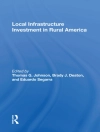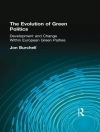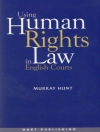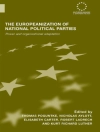This interdisciplinary work presents a conceptual framework and brings together constructivist and rationalist accounts of how EU norms are adopted, adapted, resisted or rejected. These chapters provide empirical cases and critical analysis of a rich variety of norm-takers from EU member states, European and non-European states, including the rejection of EU norms in Russia and Africa as well as adaptation of EU practices in Australia and New Zealand. Chapters on China, ASEAN and the Czech Republic demonstrate resistance to EU norm export. This volume probes differences in willingness to adopt or adapt norms between various actors in the recipient state and explores such questions as: How do norm-takers perceive of the EU and its norms? Is there a ‘normative fit’ between EU norms and the local normative context? Similarly, how do EU norms impact recipients’ interests and institutional arrangements? First, the authors map EU norm export strategies and approaches as they affect norm-takers. Second, the chapters recognize that norm adoption, adaption, resistance or rejection is a product of interaction and a relationship in which interdependence, asymmetry and power play a role. Third, we see that domestic circumstances within norm-takers condition the reception of norms. This book’s focus on norm-takers highlights the reflexive nature of norm diffusion and that nature has implications for the EU itself as a norm exporter. Anyone with an interest in the research agenda on norm diffusion, normative power and the EU’s normative dialogue with the world will find this book highly valuable, including scholars, policy makers and students of subjects including political science, European studies, international relations and international and EU law.
قائمة المحتويات
Chapter 1. Introduction: To Take or Not to Take EU Norms? Adoption, Adaptation, Resistance and Rejection; Annika Björkdahl, Natalia Chaban, John Leslie and Annick Masselot.- Part I. Adoption.- Chapter 2. A Selective and Reluctant Adopter: The Czech Republic and its (Non)Accession to Schengen and Eurozone; Ivo Šlosarčík .- Chapter 3. Mobility in Principle and Practice: Multilevel Adoption of Free Movement Norms in a European Cross-Border Region; Toni Grace.- Chapter 4. The EU and Global Economic Governance: Playing the Role of a global Leader?; Rikard Bengtsson.- Part II. Adaptation.- Chapter 5. Perceptions of ‘Normative Power Europe’ in the Shadow of the Eurozone Debt Crisis: Public Perspectives on European Integration from the Asia Pacific; Natalia Chaban, Serena Kelly and Martin Holland.- Chapter 6. From One Single Market to Another: European Integration, Australasian Ambivalence and Construction of the Trans-Tasman Single Economic Market; John Leslie and Annemarie Elijah.- Chapter 7. Moving Freely, But Taking a Different Route: Comparing Tran-Tasman and European Union Norms of Human Mobility; Kate Mc Millan.- Chapter 8. Exporting Hard Law through Soft Norms; W. John Hopkins and Henrietta Mc Neill.- Part III. Resistance.- Chapter 9. The EPA-Negotiations: A Channel for Norm Export and Import?; Annika Björkdahl and Ole Elgström.- Chapter 10. Ambitions versus Capacity: The Role of Institutions in ASEAN.- Chapter 11. Reception of EU Trade Mark Law in New Zealand; Alison Firth.- Part IV. Chapter 12. The Value of Gender Equality in EU-Asian Trade Policy: An Assessment of the EU’s Ability to Implement its Own Legal Obligations; Maria Garcia and Annick Masselot.- Chapter 13. Russia’s Complex Engagement with European Union Norms: Sovereign Democracy versus Port-Westphalianism; James Headley.- Chapter 14. The Diffusion of EU Norms to China: The Case of Tibet; Wenwen Shen.- Chapter 15. Conclusion: Annika Björkdahl, Natalia Chaban, John Leslie and Annick Masselot.












